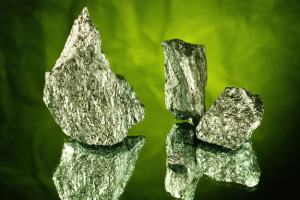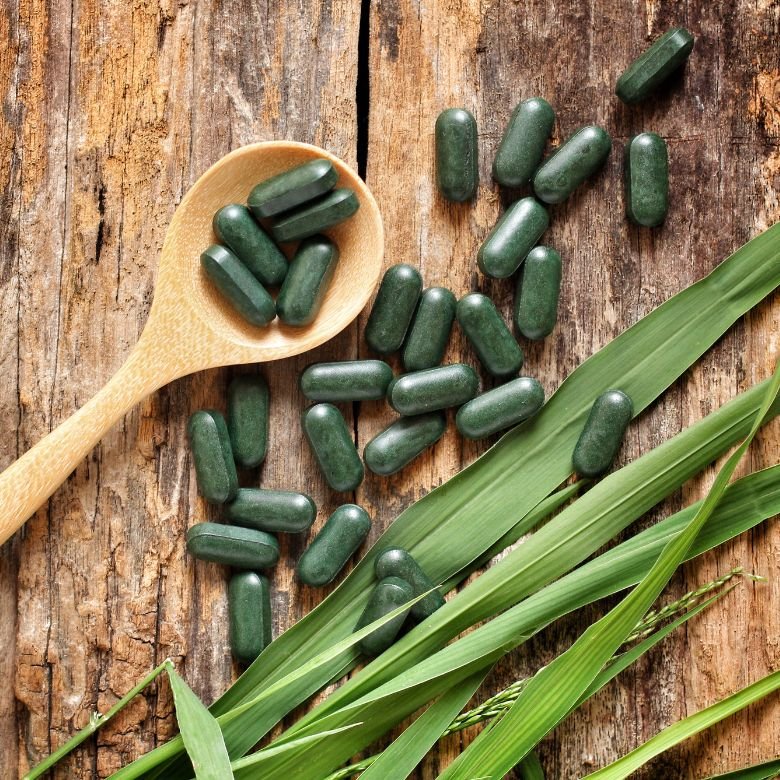Every coin has two sides, a stick has two ends, and a magnet has two opposite poles. Just like the colour green, which over the centuries has shown its dual symbolism – life and death...
The colour green is associated with vegetation, nature, hope, harmony, freedom and ecology. A shade of green mixed with blue – i.e. "mint" – gives off a feeling of freshness, satisfaction and relaxation. The colour of greenery is a reflection of the renewal of life, a symbol of nature’s everlasting bounty.
“Green is the colour of hopefulness, and of our connection to nature. It speaks to what we call the ‘re’ words: regenerate, refresh, revitalize, renew." - This is how Leatrice Eiseman, Executive Director of the Pantone Institute, described the colour green in 2017.

The deadly green of the 19th century
The colour green became most popular in the 19th century. It was the time it became a fashionable, even dominant colour among high society. European noblewomen, in love with the colour, proudly wore richly ornamented dresses in its various shades. But green dominated more than textiles, it also became the most fashionable colour for interior design, decorative items, tableware and various other home accessories.
Unfortunately, this trend turned out to be deadly for the colour’s enthusiasts. The problem was that the dyes used to dye fibres and fabrics contained toxic and poisonous substances.
The two most commonly used chemicals at that time were “Scheele’s Green” and “Paris Green.” Research conducted in 1890 confirmed that approx. 20% of textile articles contained large doses of these substances. One sample of green-dyed muslin was found to contain over four grams of “Scheele’s Green” per square metre of material.

Green death in a ball gown
Initially, no one even suspected the causes behind frequent fainting, health problems and the growing number of deaths among the aristocracy. It all started in 1775, when a chemist and pharmacist of Swedish origin, Carl Wilhelm Scheele, invented a miraculous pigment of an amazing green colour. It was created by combining copper sulphate, potassium carbonate and arsenic oxide. So it contained poison.
Unfortunately, the visual effect of this invention was stunning. The new, poisonous dye had such a beautiful, unusual colour that it immediately became the most desired fashion trend, referred to as “Schloss Green” or “Scheele’s Green.”
It is worth mentioning that the toxic dose of arsenic for humans starts at 10 mg, while about 70 mg is enough to cause death. However, female socialites weren’t falling like flies – all thanks to the volume of their outfits, which consisted of metres of fabric, several layers of underwear and tight corsets.
Nineteenth-century Europe went along with the green madness, completely unaware of the tragic consequences. The fascination with the depth of the Schloss Green of fashionable wardrobes, silk stockings, toys, curtains, carpets, wallpapers and even confectionery, reaped its deadly harvest. No one even suspected that the cause of fainting, illness and death could lie in this beautiful green dye, or that even a simple dessert addition in the form of green leaves made of sugar could be a deadly trap.
The victims of colourful gastronomic masterpieces and everyday gadgets were both adults and children. Stores proudly displayed sugar animals on artificial grass dyed with green arsenic in their windows. Store shelves were laden with groceries packed in elegant green boxes. Ignorance of fashion trends or restraint in eating sweets were no guarantee of protection against arsenic. Green curtains, patterned wallpapers or green candles that released toxic arsenic when burned were enough. The poison hidden in lush green took over every aspect of life.
Stop the green wave!
The first signals indicating the harmful nature of green dyes came already in the second half of the 19th century. The press intensely reported on the gruesome effects of arsenic. The gorgeous green was dubbed “the shade of death” by Punch Magazine, and advertising posters began recommending “arsenic-free” products.
A lot of time passed until all the risks associated with the use of the green dye were revealed. Before the knowledge about the toxicity of arsenic pigments came to light and became widespread, the poisonous green had taken many lives.
When the connection between magical green and death came to light, the colour was swept out of European and global fashion trends and other areas of life, with a green wardrobe becoming passe in the first half of the 20th century.

What’s hiding in modern green?
Modern green dyes used in industry and the production of various goods may have different chemical compositions, depending on their use and properties. Broadly speaking, green dyes can be divided into two main categories: natural and synthetic. Here are some examples of green dyes that are commonly used in industry.
Natural green dyes:
Chlorophyll: It is a natural green pigment present in plants and used as a food colouring.
Turmeric: A natural dye derived from the turmeric root. It is often used in the kitchen to make food green.
Spirulina: A microscopic algae that is a source of a natural green dye. It is mainly used for food purposes.
Synthetic green dyes:
Chlorophyllins: Synthetic green dyes obtained from chlorophyll. They are used in the food industry, in particular for food colouring.
Green azo dyes: The textile industry, as well as many other fields, use synthetic azo dyes, which contain a green pigment.
Anthraquinone green dyes: Synthetic organic dyes that can be used in a variety of applications.
It is worth remembering that the chemical composition of green dyes can be quite complex, and many of them may contain various chemical compounds that give them the desired colour. Moreover, green dyes are widely used in various fields, such as the food, pharmaceutical, cosmetic, textile and other industries, therefore they may have different compositions depending on their purpose. It’s worth checking the product label or technical specifications to learn more about a given green dye and its composition.
It is important to remember that some green substances or dyes on the market today may be toxic due to the chemical ingredients that are used to obtain the green colour. Those based on chromium, copper or arsenic are especially harmful. For example, chromium green contains chromium, which may be harmful to health. It occurs mainly in the form of lead or chromium salts (VI).
The green colour in products such as paints or food dyes can also be obtained using dyes containing harmful substances. They can cause, among others, allergic reactions.
There are also green fluorescent dyes available on the market, used e.g. for research purposes. They are often used to colour toy elements. Special care should be taken in their case as fluorescent dyes may be harmful if swallowed or in touch with the skin.
The beautiful and soothing yet sometimes treacherous green…
Green is the colour of nature, undoubtedly associated with life, health, harmony and hope. It symbolises growth (e.g. of stock prices of listed companies), freshness (mint chewing gum) and connection with nature (Animal Planet logo). Green also represents safety (e.g. road signs).
But it hasn’t always been so “green.” In the Middle Ages, green was a symbol of misfortune, disaster and all evil. Some negative connotations still exist today. Strong, bright, saturated, elm green is associated with poison, while a pale grey shade of the colour brings disease to mind.
The colour green may also stand for other, less positive features, such as instability or uncertainty (green maple leaf representing a beginner driver) or randomness (green poker tables, roulette, billiards).
However, there is no doubt that we like the colour green, even in the financial sphere (dollars, which are commonly called “the green” in Poland). Being surrounded by greenery calms you down, gives you a sense of relaxation and security.
Green is a positive colour by definition. It is obviously related to nature, health and vitality. It increases concentration and reduces stress, but be careful!
Even though yellow is the colour of betrayal, green can also be treacherous. Therefore, it is important to always check the chemical composition and properties of chemicals used in products containing the colour green.
Let’s follow appropriate precautions, especially when it comes to products that may come into contact with food or the skin. It is also worth paying attention to regulations and standards regarding the safety of chemical products to avoid exposure to toxic substances.
Sources:
- Chrisp, P. A History of Fashion and Costume. The Victorian Age, Bailey Publishing Associates Ltd., 2005.
- Emsley J., The Elements of Murder: A History of Poison, Oxford University Press, 2005.
- https://ciekawostkihistoryczne.pl
- https://loungemagazyn.pl
- https://www.photowall.pl/trendy-i-inspiracje/toksyczna-historia-koloru-zielonego-article
- https://cyrekcreative.com/blog/kolor-zielony/